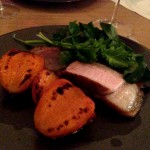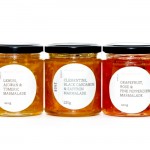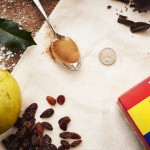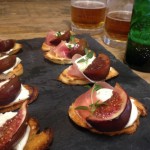[First published in Fish on Friday. To read more about my Tincan experience, see this article in Munchies.]
Last week, a new restaurant launched in London’s Soho: Tincan. A restaurant selling only tinned seafood. No kitchen, no chef – just waiters to lift a pricy pilchard from its tin, and take it to the table.
My first instinct was to roll my eyes. “Only in London,” sighed a friend. After all, Tincan’s launch came in the same week that a Death Row-themed diner was pulled and Cakeageddon was announced (an interactive, cake-themed horror farm in Shoreditch, if you who were wondering). Each week, the food scene lurches more into the realms of the absurd. Surely diners are starting to crave a simple pie and a pint, not a tinned fish gimmick.
But while reading around the launch, I discovered the Iberian concept of conservas restaurantes. While us Brits might not have happy associations with industrially tinned pilchards, our Spanish and Portuguese neighbours have long since turned canning into an art and consider the results to be a delicacy. So much so, that conservas restaurantes are eateries that specialise in tinned seafood, such as cured bacalao, octopus in oil, razor clams, anchovy fillets, all served simply with bread and a glass of something local. So you might say that tinned fish is the Spanish equivalent of a pie and a pint after all. Sort of.
Casting aside my initial judgement, I headed to Soho to try Tincan for myself. The restaurant is a six-month pop-up run by AL_A architects. Company founder Amanda Levete was working on a cultural centre in Lisbon when the idea first struck, as she stumbled across an old fishing tackle shop that had been beautifully renovated as a conservas store.
It’s clear from the off that the people behind Tincan have a strong aesthetic, and a passion for a beautiful tin. Designs from all over Europe decorate the frontage and continue on the walls inside: golden puck-shaped tins; tins with grinning faces staring out from the labels; minimally designed tins with nothing but a solitary fish or squid on the front.
The menu provides details of where each tin, and its contents, comes from and some extra useful information, such as: “Lightly smoked cod liver. This Icelandic delicacy is the foie gras of the sea, packed full of healthy Omega-3”; or “Clams in their shell in garlic. The Carril clam is prized for its excellent quality and considered the ‘king’ of Galacian clams.” I couldn’t see anything from the UK, though, which is a shame – not exotic enough, perhaps?
That aside, the sheer variety is a reminder of the perks of tinning: like anything else, you can harvest seafood when it’s in season, at its peak and abundant, then enjoy it all year round. When done right, it can be a thoroughly sustainable, as well as tasty, approach.
When it comes to actual eating at Tincan, it’s the contents of the tin that matters, so accompaniments are kept suitably simple: small bowls of finely-diced shallots, chilli and chopped parsley, along with some bread, olive oil and plain lettuce. I chose tuna steak and smoked cod liver, and when they arrived two things struck me. First, the delicate flavours: no heavy sauces or the boiled taste that can be the result of industrially tinned seafood being sterilised and over-cooked in their tins. Just light oils and fragrant herbs.
Second was the immediate disconnect with the tin: as soon as the fish was put on a tapas dish, it became tapas for me, not tinned fish. Any remaining reticence was gone and it was easy to focus on the taste – which was delicious. And that’s the point: just like posh tins of French pate or cassoulet, or Kilner jars of confit duck or preserved vegetables, or even those tiny glass jars of caviar, it’s the quality of the contents that matters. This kind of imported, artisanal tinned seafood isn’t cheap – indeed it’s a luxury. But it’s a proper treat and a fun change for the diner – and there are plenty of savings on kitchen facilities and staff for the restaurant. So who knows? Perhaps conservas restaurantes will catch on this side of the Channel and tins will become the new tapas.
Tincan
7 Upper James Street
London
W1F 9DH
http://www.tincanlondon.com/
Host your own Tincan experience at home with our choice of delicious tinned seafood, all available in the UK
1. Ortiz Ventresca Bonito, £7.95, Brindisa
Ventresca is the rich, succulent belly fillet of the tuna – the most desirable part of the fish. The Ortiz Bonito is caught by rod and line, and is available online or at Brindisa’s London shops in Brixton or Borough.
2. Cod Liver, £5.90, The Fish Society
Cod liver is a real delicacy, often considered a serious alternative to foie gras. Poached in its own oil, the Fish Society’s cod liver comes from Iceland. It is particularly rich in Omega-3 fatty acids.
3. The Pilchard Works smoked Cornish pilchard fillets, £1.89, Waitrose
The Pilchard Works prides itself on staying true to traditional techniques, hand-grading, flash-frying and hand-filling its beautiful tins – as was the way with the first sardine cannery, back in 1853. These are delicious: a world away from those haunting memories of childhood teas.
4. Sea Urchin Caviar, € 16.50, Los Peperetes
These sea urchins are hand-dived between January to April, and then sold at Spain’s Fisterra, O Grove and Aguiño fish markets. Available via Los Perpertes’ website, along with other delicacies such as razor clams, hake eggs and even goose-necked barnacles.
5. Anchovies de L’Escala, £9.95, Fortnum & Mason
L’Escala anchovies are regarded as the best in the world, preserved with salt and packed into a jar with olive oil, garlic and oregano.
6. Tinned white crab meat in brine, £2.99, Marks and Spencer
This tin is a real eye-catcher with its beautiful wood-cut design and the white crab meat inside is properly rich and chunky.






Leave a Reply